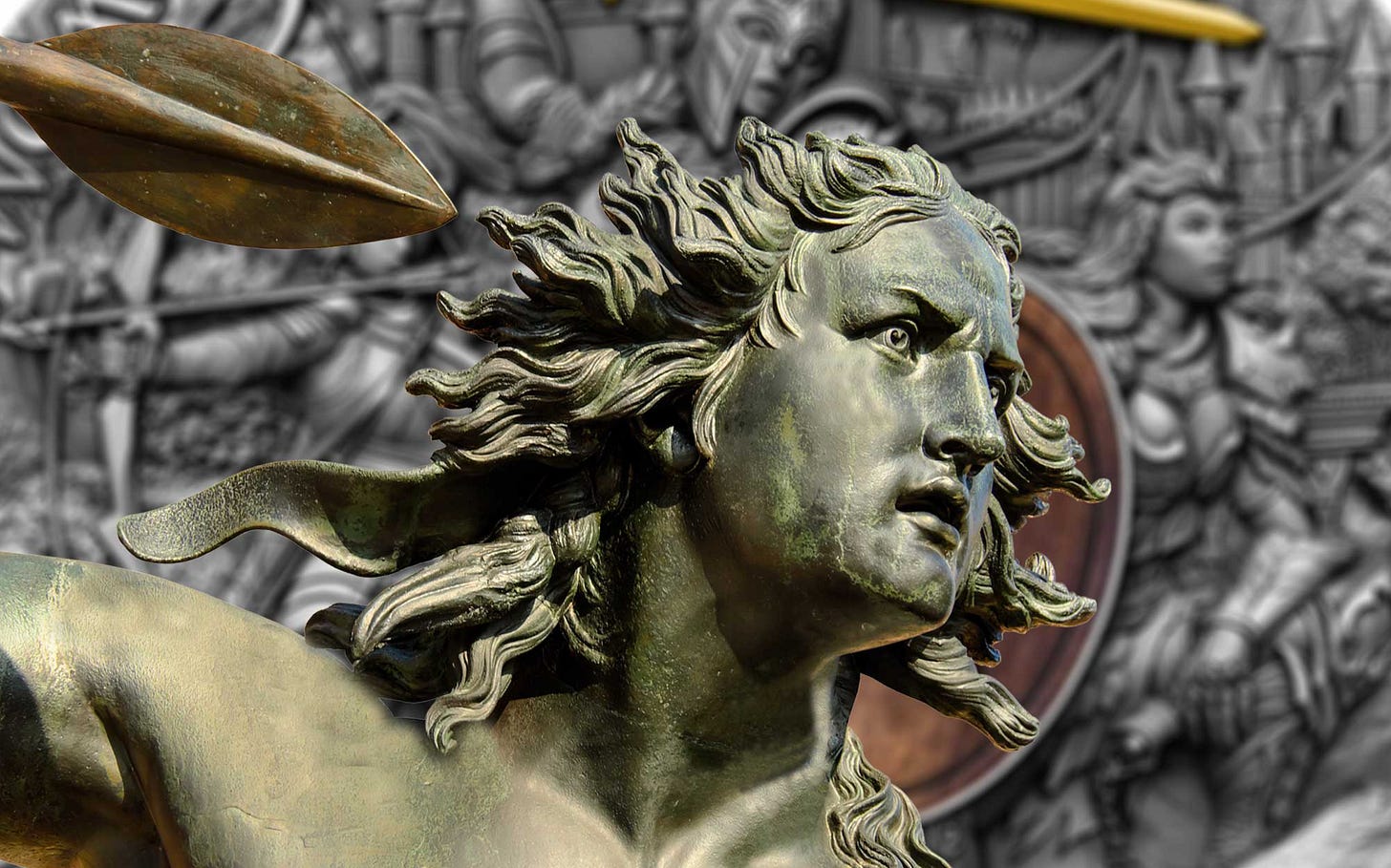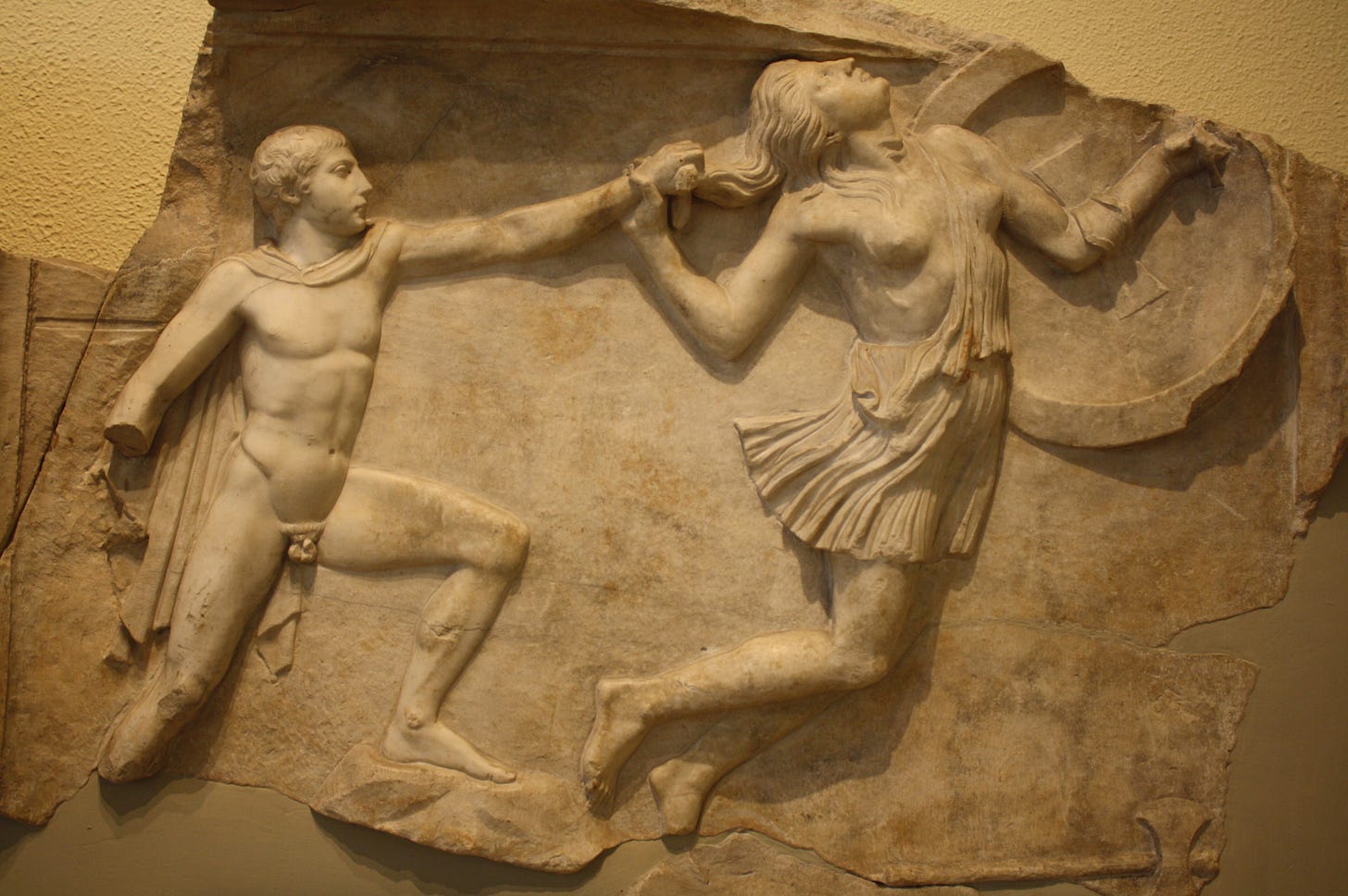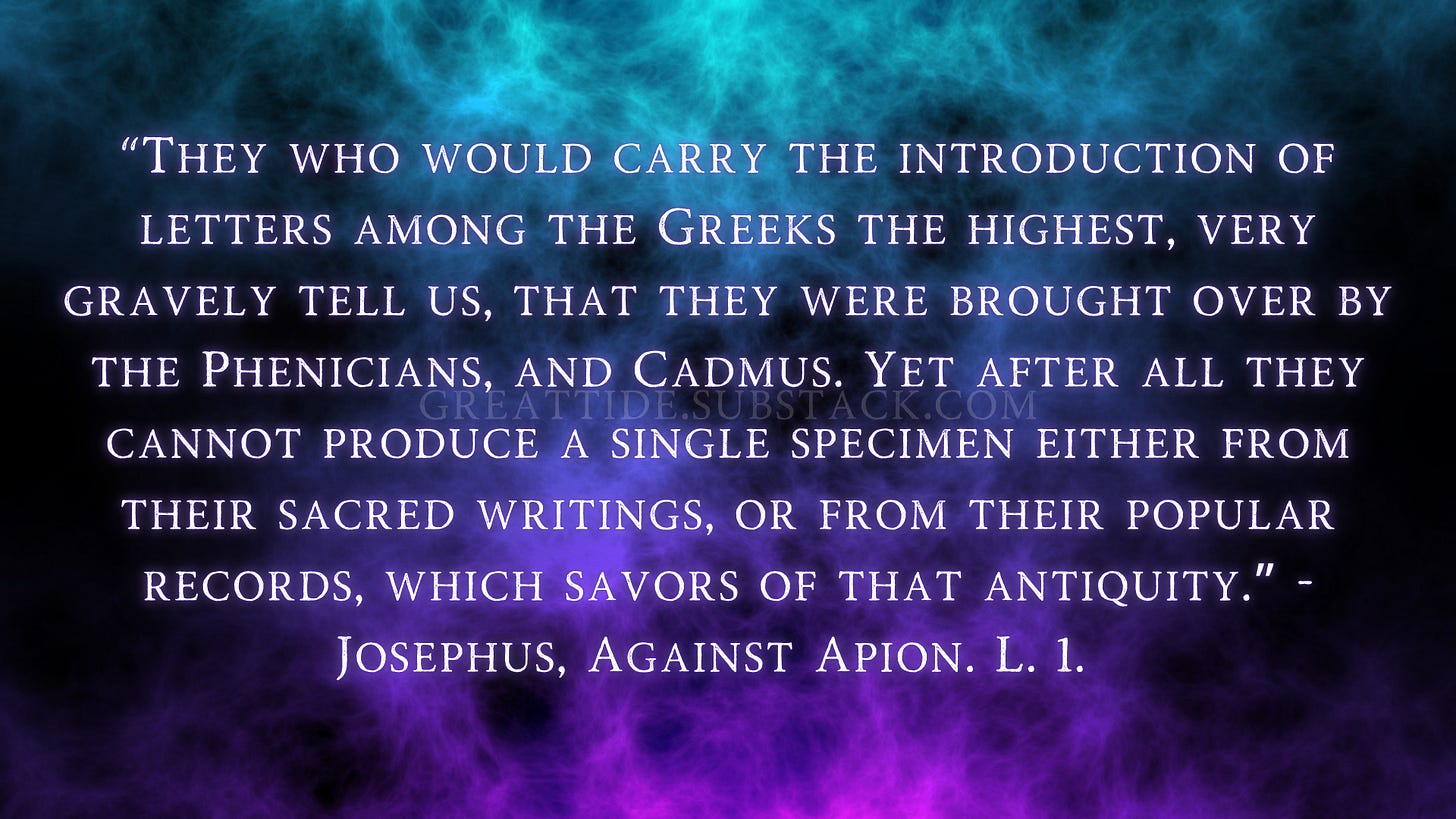According to Diodorus of Sicily, the Amazons made their home in the most western parts of Africa, at the extremity of Atlas, where the mountain terminated in the ocean. The country was called Mauritania, and was supposed to have been possessed by Atlantes and Gorgons. Of this, Bryant wrote (Ib. p. 69.), “The Grecian writers, who did not know that the same family went under different titles, have often made the same nation at variance with itself. And as they imagined every migration to have been a warlike expedition, they have represented Myrina as making great conquests: and what is extraordinary, going over the same ground, only in a retrograde direction, which Osiris had just passed before. Her first engagement was with Atlantes of Cercene: against whom she marched with an army of 30,000 foot, and 2000 horse; whom she completely armed with the skins of serpents. Having defeated the Atlantes, she marched against the Gorgons, whom she likewise conquered (Writers mention that she raised over the slain three large mounds of earth, which were called ταφοι Αμαζονων (taphoi Amazonon), the tombs of the Amazons. This shows that the Gorgons and Amazons were the same people, however separated, and represented in a state of warfare.); and proceeding forward subdued the greater part of Africa, till she arrived at the borders of Egypt. Having entered into an alliance with Orus, she passed the Nile, and invaded the Arabians, whom she defeated. She then conquered the Syrians, the Cilicians, and all the nations about Mount Taurus; till she arrived at Phrygia, and the regions about the river Cäicus. She built many cities, particularly Cuma, Pitane, and Priene. She also got possession of several islands; and among others, of Lesbos and Samothracia, in which last she founded an asylum. After these transactions Myrina, accompanied with Mopsus the diviner, made an expedition into Thrace, which was the ultimate of her progress; for she was supposed to have been here slain. According to Homer she died in Phrygia: for he takes notice of her tomb in the plains of Troas; and represents it as a notable performance.” (Now there is before the city a steep mound afar out in the plain, with a clear space about it on this side and on that; this do men verily call Batieia, but the immortals call it the barrow of Myrine, light of step. Iliad. L. 2. v. 811.)
Myrina is Marina, which, in Latin, is an adjective meaning of the sea, as in Virgo Marina, or Virgin of the Sea, which is none other than Mary, Venus, Aphrodite, Myrrha, Maia, Maya, and all the other thousands of names she goes by. You’ll notice that her expansion is to the east and in locations only accessible by maritime thoroughfare. If this is an allegory beyond astronomical, which I don’t know that it is, it may indicate a spread of the ancient Italian system to the extremities of the known world back then, from Mauritania to Britain, all the way to Asia Minor.
The following mounds are in Ireland, and are almost the same as the tumuli of the Etruscans. Given that the Irish still use Etruscan words, signifying the same thing, and whose language is observably Punic at the base, or more specifically, Sicilian Phoenician, along with the Basque people, whose base is Spanish Phoenician, then these suspicions are warranted.
The Newgrange tumulus and the Knowth tumuli fashioned in the style of the Etruscan tumuli, however the masonry is not as good. Is this due to lack of resources, the antiquity, or is this a coincidence? Keep in mind Britain was peopled by Phoenicians and Etruscans are descended from Phoenicians, or whoever made up the maritime empire if Phoenician is just a placeholder term used by a few Greek historians, which was subsequently overblown (there is no record of a nation that refers to itself as Phoenicia or its people as Phoenician). Here is what the Etruscan tumuli of Banditaccia look like in Italy:
Maur, the etymological root of Mars, signifies great, lord, or prince in Etrusco-Phoenician, still used by Italians today in names like Mauro. This word may be solely Etruscan, or some offshoot of its people, given that the Phoenician story of how the Greeks acquired letter is fabulous and not supported by the historical or archaeological record.
I dive much deeper into these subjects in the Spirit Whirled series, along with The Real Universal Empire. All of these works and more are available to members of this Substack, along with over 200 research articles and podcasts.
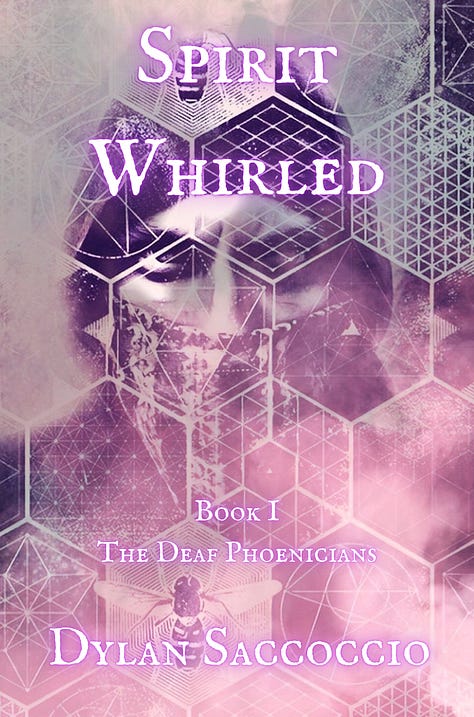




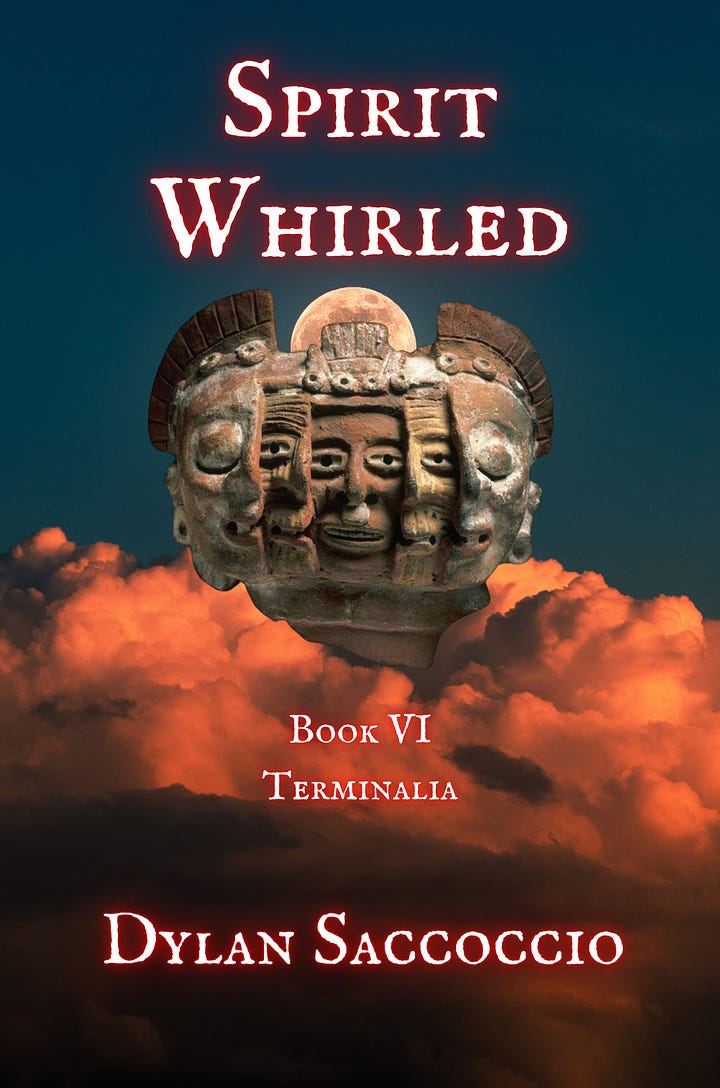
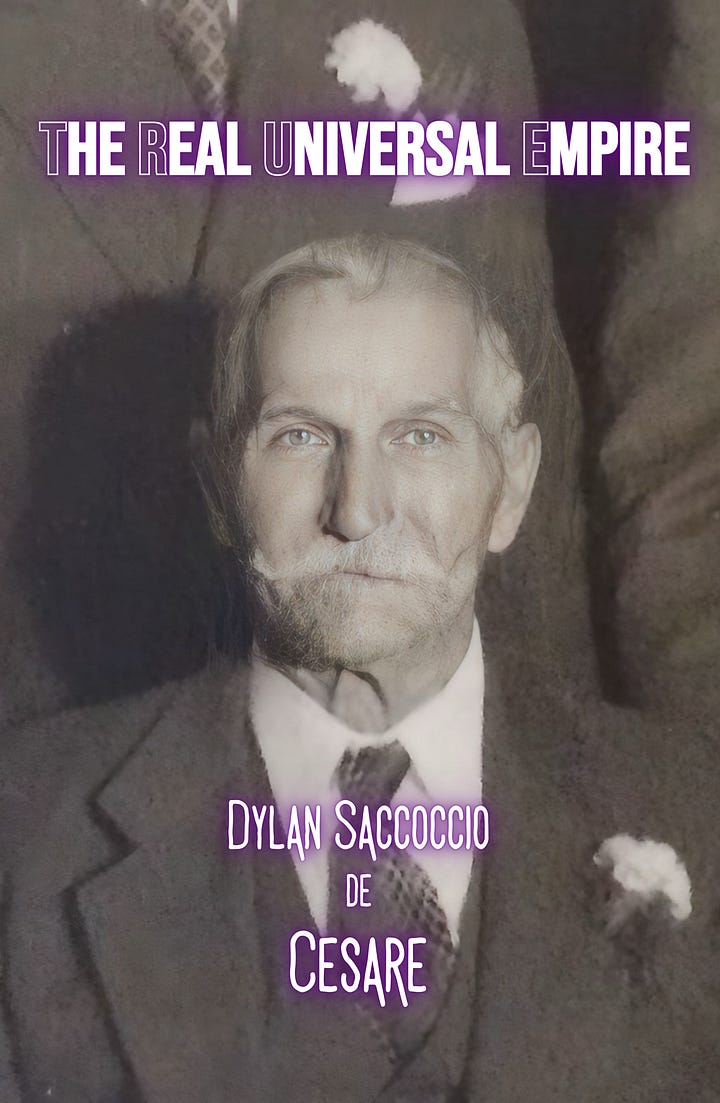
Become a member to access the rest of this article.
Keep reading with a 7-day free trial
Subscribe to Ancient History, Mythology, & Epic Fantasy to keep reading this post and get 7 days of free access to the full post archives.


